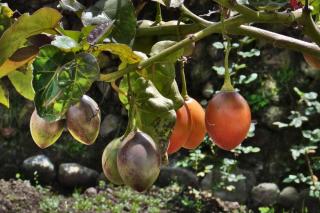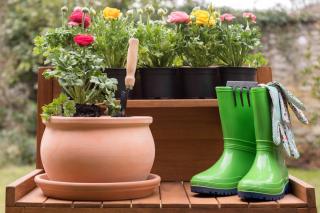The petunia is a very cute flower that flowers early in spring and all the way to the first frost spells.
Key Petunia facts
Name – Petunia, surfinia
Family – Solanaceae or nightshade
Type – annual
Height – 6 to 16 inches (15 to 40 cm)
Exposure – sun, part sun and shade
Soil – rather rich
Flowering – May to October
Caring for this plant from planting to blooming is very easy and its decorative effect is guaranteed!
- Read also: all our pages related to petunia
Sowing petunia
It is the simplest and most practiced manner for propagating your petunia from seed.
- For seeds, practice sowing in a tray indoors, in your home, starting in February.
- Simply press down the seeds to ensure they stick to the special “seedling soil mix”, without covering them over.
- Water regularly to retain moisture, but not too much.
- When the first leaves pop out, transplant to nursery pots and wait for the last frost to have passed before planting them outdoors.
Whether the plant is in a container or in the ground, select a sun-filled spot for maximum blooming.
After sowing comes the time to transplant your young plants to flower beds, garden boxes or containers.
How to plant petunia
Perhaps you’ve purchased your petunias in a garden store, or you’ve prepared your own seedlings. In both cases, the planting to the final growing spot is important for the blooming to stand out and last a long time.
- It is recommended to plant petunia in spring, after any risk of freezing is over, because it doesn’t survive freezing well.
- Petunia loves places with a lot of sunlight, but avoid scorching locations.
- If the weather in your area is hot, best select part sun.
- In any case, avoid overly windy spots because it is vulnerable to wind and drafts.
How to plant petunia in a flower bed
Petunia flower beds are very ornamental, and make it possible for you to create amazing clusters of colors in the garden. Its rapid growth will let you quickly reach optimal density.
- Blend garden soil to soil mix.
- Spread plants about 4 to 5 specimens to a square yard (1 m²).
- The more petunias are in your flower bed, the greater the ornamental impact.
Petunia in pots, containers and garden boxes
Petunia is actually most commonly found in pots, garden boxes and other various containers, probably because it is one of the flowers best suited to growing in pots.
- If you’ve purchased your plants in nursery pots, mix together garden earth and soil mix.
It’s also possible to use only soil mix, since this would further boost plant growth and blooming.
Hanging petunia
You’ll be enchanted with the result a balcony with hanging petunias along the railing will offer, with all its cascading flowers.
- These petunias are perfectly tailored to grow in hanging containers and pots, and along edges and simply as ground cover, too.
- Choose hanging plant soil mix which tends to be lighter, otherwise you’ll have problems with this type of planting.
Care, watering, pruning and diseases striking petunia
To enhance flower-bearing, remove wilted flowers regularly.
Watering and fertilizing petunia
During spells of high temperatures, feel free to water in the evening to avoid having your petunia dry out.
- Petunia requires watering often, especially in garden boxes and suspensions.
- Avoid drowning the roots, it doesn’t appreciate it much either.
- Check beforehand if rain will fall or not, before watering.
- Petunia will always be at its best if you provide flower plant fertilizer once a week.
Diseases and parasites attacking petunia
Petunia can deal with most diseases on its own, but it does fall prone to attacks from aphids and slugs.
- Find our advice on fighting aphids
All there is to know about petunia

It loves sun and well-drained fertile ground.
It can be found in flower beds, along edges and in rocky ground. It produces very beautiful clusters of color.
Many hanging pots also harbor petunia.
This flower is perfectly suited to growing in suspended pots because its leaves and flowers dangle and tumble along the side like a waterfall.
Major types of petunia
Petunia types can be divided according to flower size and flower bearing.
- Petunia milliflora with little flowers.
- Petunia milliflora with medium-sized flowers.
- Petunia grandiflora has the largest flowers.
- Surfinia is more adapted to growing in the sun.
- Finally, hanging petunia, is ideal for suspensions or ground cover.
Smart tip about petunia
Flower your garden, balcony or terrace with petunia for a landscape that is full of colors!
Petunia against a body of water by Rosalyn & Gaspard Lorthiois, own work





I have a question
Ask my questionI'd like to comment
Post a commentNo comments yet – be the first to share your thoughts!